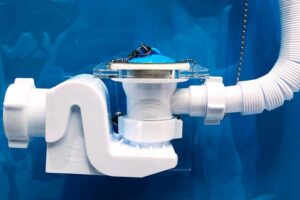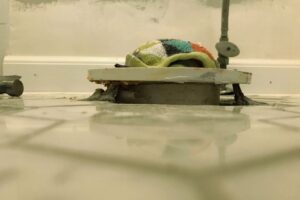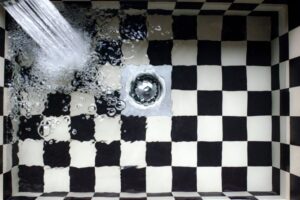The dripping noise from a leaking toilet flapper is not only bothersome. It is also putting your money down the drain because you’re paying for water that you haven’t used. If you want to know more about toilet flapper leaking – causes and how to fix it, you are in the right place.
One of the common causes of toilet flapper leaking is the dirty flapper. Over time and underwater, algae and other waterborne dirt accumulate on the flapper. This buildup of foreign matter along the perimeter of the flapper prevents it from closing and sealing the drain hole properly.
Toilet flappers are usually made of rubber. This material will harden and break down if submerged in water for long periods. If the rubber flapper has cracks on its body or edges, water from the tank will leak to the drain hole going to the toilet bowl. You need to replace it with a new one.
Read on to learn more about leaking toilet flappers, why this happens, and how to fix a leaky toilet flapper.
Toilet Flapper Leaking
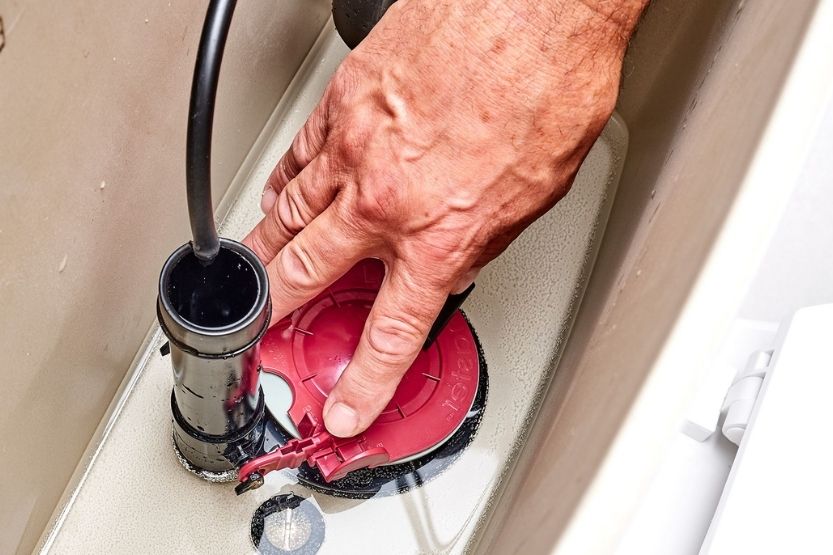
Unable to Properly Seal the Tank’s Drain Hole
A toilet flapper can leak if it cannot properly seal the tank’s drain hole. The most common cause of this problem is a dirty or bad toilet flapper. Since the flapper is underwater for months, it will attract algae and other waterborne dirt.
Algae and Dirt Buil Up
As algae and dirt build-up along the flapper’s edges, the flapper won’t seal the tank’s drain hole completely each time you flush your toilet. So, water from the tank will leak down to the toilet bowl.
Hardened Rubber Flapper
The rubber flapper can also harden, become brittle and then develop cracks on its edges over time while underwater. As such, it will not be able to do its work of sealing the tank. You will need to replace it to stop the leaking.
Replace Rubber Toilet Flappers Every Three Years
Manufacturers of rubber toilet flappers recommend replacing them every three years. Three years is the maximum service life of rubber toilet flappers. At most, you should replace the flapper after five years – even if it does not give you any problem.
How Can You Fix a Broken Toilet Flange?
What Is a Toilet Flapper and How Does It Work?
Located at the Bottom and In the Middle of the Tank
The flapper inside your toilet’s water tank is a round rubber or plastic seal seated at the bottom and in the middle of the tank. It has two arms that are usually connected to the tube or pipe standing in the middle of the tank.
Has a Hook Connected to the Chain
The rubber flapper has a hook connected to a chain. In turn, this chain is connected to an arm. Ultimately, the said arm is attached to the flush handle outside the water tank. When you press or push down this handle, the arm will lift the chain, opening the flapper.
Fully Seated Flapper Will Not Leak
Once the flapper is opened or unseated, water will come rushing into the toilet bowl. This creates the flush. As the water drains to the hole, the water that remains in the tank will have enough pressure to push down the flapper again to its seat. If the flapper seats fully, there will be no leak. However, if it does not, leaks will ensue.
Works Like a Valve
So, the flapper works like a valve. It regulates water flow in and out after you flush the toilet. This valve opens up when there’s a water demand. It closed down so the tank could slowly fill up again. When its airtight seal is compromised, flapper leaks will follow.
How to Tell If Flapper Is the Problem
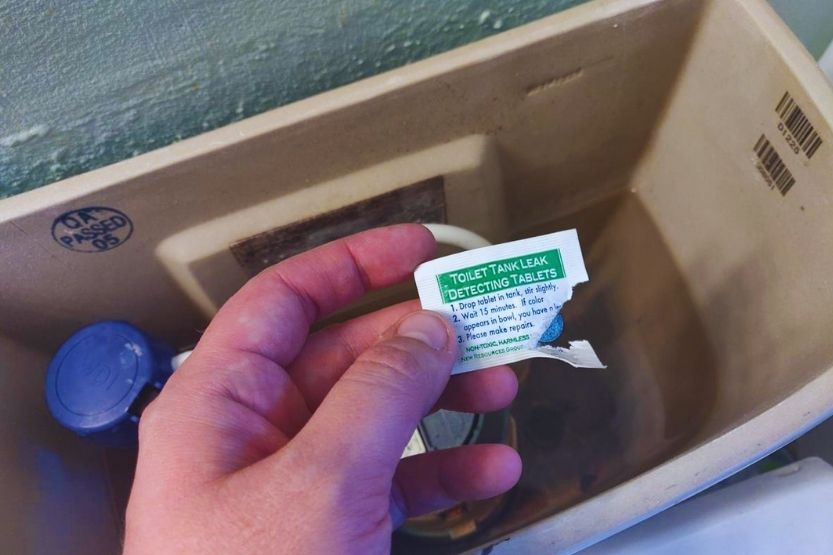
If you are unsure if the flapper is the problem, there is a way to find out. It is relatively simple to check if the problem is with the flapper:
1. Check the Flapper
The first thing you need to do is check the flapper’s condition. Look at its material if it is already worn out and has small holes or cracks on its perimeter or edges. Also, check if it has hardened already.
This rubber flapper, if it’s still ok, should be flexible. It should also still look clean without any deformities or irregularities. However, it’s time to replace it if it is already hard, inflexible, full of dirt and algae, and has small nips on its edges.
2. Perform a Color Test
This one is easy. Get a coloring agent. It could be food coloring or dye:
- Pour about 10 to 20 drops of the coloring agent into the water tank.
- Then wait about 25 to 30 minutes to allow the coloring agent to do its work.
- If there’s a flapper leak, you will see that the coloring agent inside the water tank will find its way into the water in the toilet bowl.
- If you see the color dye made its way into the tank in less than 10 minutes, you have a more serious flapper leaking problem.
Again, what are the causes of the toilet flapper leaking? A dirty flapper due to dirt and algae is one of the common causes of toilet flapper leaking. This accumulation prevents the flapper from properly sealing the drain hole.
Causes of Flapper Leaks
Most toilet flappers are designed to last from three to five years. However, there are circumstances where flappers cannot last that long. Here are some of the things that can cause flapper leaks:
1. Bad Flapper
This is one of the most common causes of flapper leaks. If the flapper is broken, damaged, or already worn out, it will cause constant slow leaks in the tank. It’s insidious because the flapper does its job so water can fill up the tank. But it can’t keep the water from leaking because of some defects in its body.
2. Incorrect Chain and Handle Tension
If the tension between the handle and chain is incorrect, it will also cause the flapper to leak. The tension of the connection should be just enough to keep the flapper fully seated on its seat at the bottom of the tank.
Too Much Tension Between the Handle and Chain
If the tension is too high, the flapper will be slightly in an open position. That will allow water to leak out slowly. What you need to do is to put some slack on the chain. The recommendation is about 1/2 inch. Don’t go over that because you will not be able to pull up the flapper when you flush the toilet.
Too Long Chain
Additionally, if you add more than the required slack, the chain will be too long than what is necessary. So, if the chain is too long, when you flush the toilet, the chain could get caught under the flapper as it begins to sit on its seat. If that happens, you will certainly have flapper leaks on your toilet.
3. Hard Water
If the water supply coming from the mains is hard water, you will develop flapper leaking problems. Why? Hard water has higher pH levels and contains mineral deposits. Over time residues will build up and stick to the body of the flapper and its components.
Install a Water Softener on the Water Pipe
Toilet flappers in hard water areas in the United States are prone to cracks, warp, and crumble. You can install a water softener on your water pipe connected to the mains to avoid this problem.
4. Microorganisms in Water
Waterborne microorganisms can also affect the functioning of the toilet flapper. Algae and bacteria can accumulate inside the water tank.
Choose a Flapper With Anti-Fungal and Anti-Bacterial Properties
Once they have settled inside the tank, they can form a colony on the flapper causing it to break down or develop imperfections. To prevent this situation, choose a flapper with anti-fungal and anti-bacterial properties.
5. Chemicals from Toilet Cleaners
Some toilet cleaners contain chemicals detrimental to rubbers, silicone, and plastic materials. Using such chemicals to clean the water tank, your toilet flapper will deteriorate faster. Flappers submerged in such chemicals may only last for a year or even shorter.
Signs of Toilet Flapper Leak

If your toilet flapper is leaking, you will know it if you know the signs. Here are the most common symptoms of this problem:
- Your water bill suddenly shoots up
- There are ripples of water in the toilet bowl between flushes
- Presence of mildew and mold inside the tank. The tank also smells strange.
- Water in the toilet bowl runs intermittently. It also takes a longer time to fill it up.
- Rattling the flush handle does not stop the flushing.
Fixing a Leaking Toilet Flapper
It is not that difficult to fix a leaking toilet flapper:
Materials
You can do it if you have average handyman skills and the right tools. Following is the usual fix to this problem. But first, you need to prepare the following:
- Coloring dye
- Pliers
- Screw driver
- Cleaner to remove the mineral and mold deposits
- Old rag
- New flapper (if necessary)
Steps
1. Check If the Leak Comes from the Flapper
Lift the lid off the toilet’s water tank. Then, put about 10 to 20 drops of coloring dye into the water tank. Don’t flush the toilet yet and wait for about 30 minutes. Then observe the water inside the toilet bowl. If the water acquires the color of the dye, the leak is coming from the flapper. Perhaps it is already worn out. If it is, replace it.
2. Turn Off the Water Supply
A water supply pipe at the bottom of the toilet water tank leads water to the water tank. Turn off the supply valve in this pipe. Then flush the toilet to remove all the water inside the tank.
3. Clean the Flapper or Replace It
If the flapper’s condition is still ok, perhaps cleaning it will solve it. Use the mineral cleaner to remove all the deposits on the flapper. Since you are already doing this, it would be better to clean the inside of the water tank. There may be some deposits there that can also affect the flapper.
But if the flapper has already hardened, has small holes, cracks or imperfections, just cleaning it might not solve your problem. The best option is to remove it and replace it altogether. Use the pliers or screwdriver to do this.
4. Check the Tension on the Chain
And since you are already working inside the tank, why not check the chain’s tension that connects the flush handle and the flapper? Make sure that it has the right tension. Inspect the condition of the chain itself. If it is made of metal, check if it has already corroded. If it is, you need to replace it with a new chain.
What Causes Low Water Level in Toilet Bowl?
Conclusion: Toilet Flapper Leaking
A dirty flapper is one of the common causes of leaking toilet flapper. Algae and other waterborne dirt can also accumulate on the flapper while submerged in water for months. This foreign matter buildup along the edges of the flapper prevents it from sealing the drain hole properly. So, water from the tank will leak down to the toilet bowl.
Flappers are usually made of rubber. Over time, the rubber material will harden and then develop cracks. So, the flapper will leak. The easiest and the best solution to this problem is to replace the old flapper with a new one.
Read next:


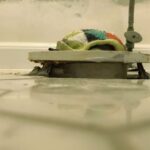
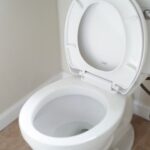
![Toilet Randomly Runs or Flushes Itself [Causes and How to Fix] toilet randomly runs](https://homecarezen.com/wp-content/uploads/2021/05/toilet-randomly-runs-150x150.jpg)


